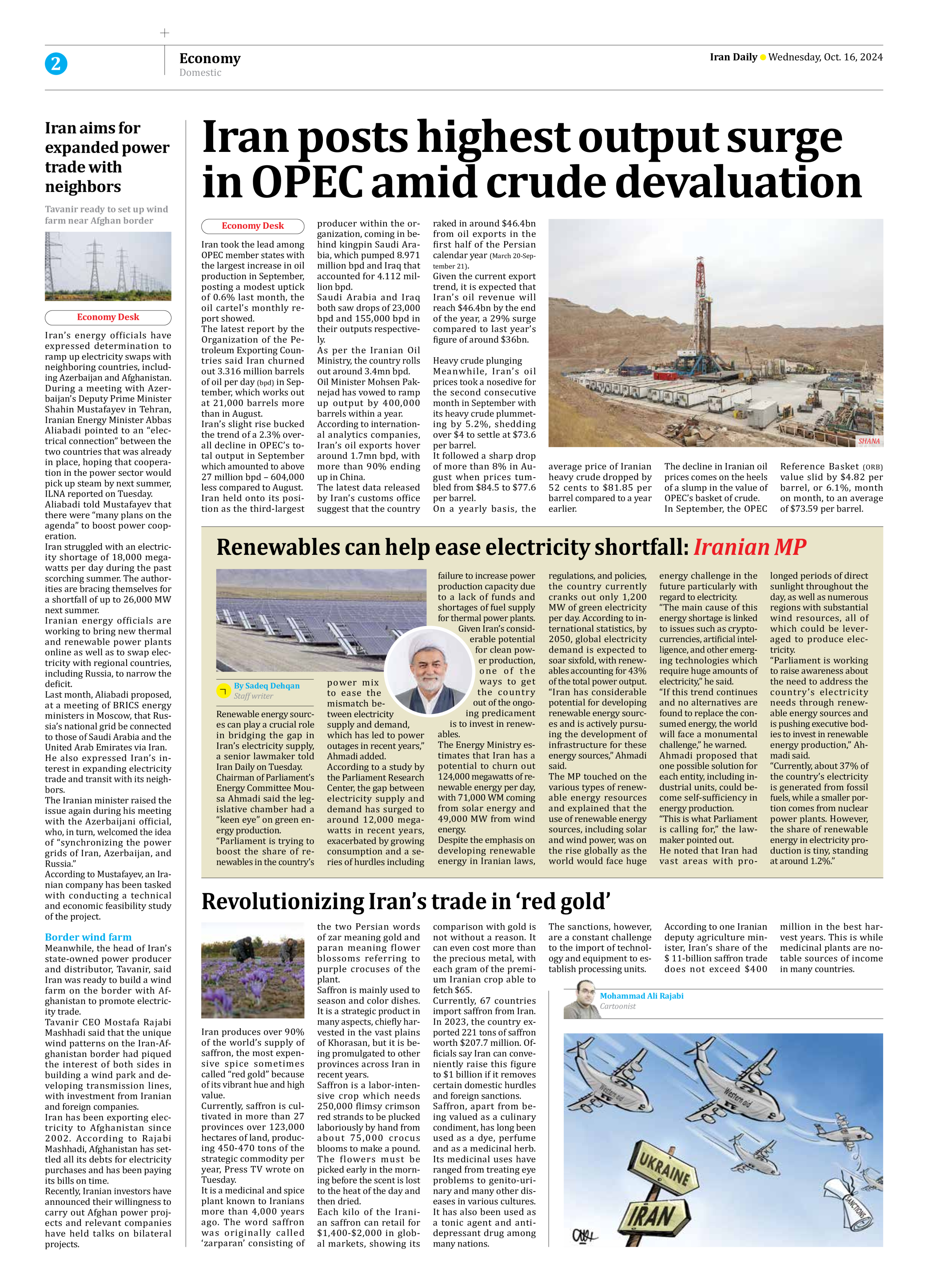
Copy in clipboard...
Revolutionizing Iran’s trade in ‘red gold’
Currently, saffron is cultivated in more than 27 provinces over 123,000 hectares of land, producing 450-470 tons of the strategic commodity per year, Press TV wrote on Tuesday.
It is a medicinal and spice plant known to Iranians more than 4,000 years ago. The word saffron was originally called ‘zarparan’ consisting of the two Persian words of zar meaning gold and paran meaning flower blossoms referring to purple crocuses of the plant.
Saffron is mainly used to season and color dishes. It is a strategic product in many aspects, chiefly harvested in the vast plains of Khorasan, but it is being promulgated to other provinces across Iran in recent years.
Saffron is a labor-intensive crop which needs 250,000 flimsy crimson red strands to be plucked laboriously by hand from about 75,000 crocus blooms to make a pound. The flowers must be picked early in the morning before the scent is lost to the heat of the day and then dried.
Each kilo of the Iranian saffron can retail for $1,400-$2,000 in global markets, showing its comparison with gold is not without a reason. It can even cost more than the precious metal, with each gram of the premium Iranian crop able to fetch $65.
Currently, 67 countries import saffron from Iran. In 2023, the country exported 221 tons of saffron worth $207.7 million. Officials say Iran can conveniently raise this figure to $1 billion if it removes certain domestic hurdles and foreign sanctions.
Saffron, apart from being valued as a culinary condiment, has long been used as a dye, perfume and as a medicinal herb. Its medicinal uses have ranged from treating eye problems to genito-urinary and many other diseases in various cultures. It has also been used as a tonic agent and antidepressant drug among many nations.
The sanctions, however, are a constant challenge to the import of technology and equipment to establish processing units.
According to one Iranian deputy agriculture minister, Iran’s share of the $ 11-billion saffron trade does not exceed $400 million in the best harvest years. This is while medicinal plants are notable sources of income in many countries.







